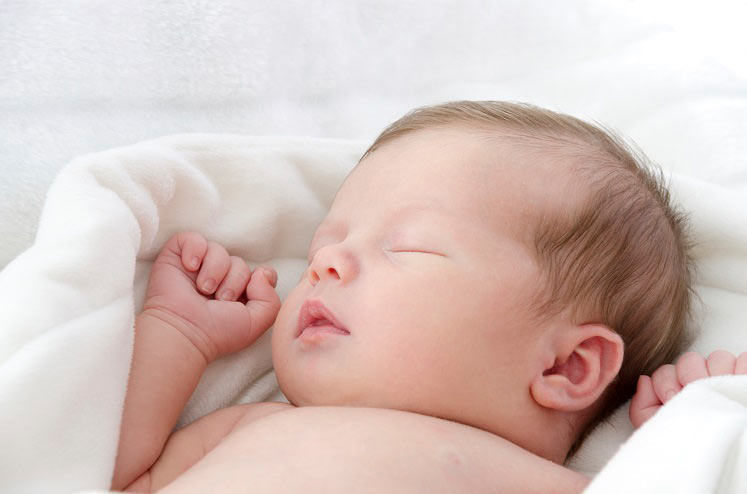How to ensure your baby gets a safer night's sleep
There are things you can do to ensure your baby gets a safer night's sleep
At a glance
- Try to avoid your baby’s room getting too warm
- A simple firm, flat, waterproof mattress with no loose bedding is best
- Always place the baby down to sleep on their back

Newborns generally sleep randomly so the key thing to remember is, don't try and second guess when they are likely to sleep - particularly at night in the early days. Nor should you listen to those know it all parents who tell you their baby slept through the night from 3-weeks-old, probably untrue.
However, it's no harm to get some things in place at bedtime in the early days. For example, giving your baby a bath, followed by a cuddle, nursery rhyme and their nightly feed helps your baby appreciate when it's time to wind down. They won't necessarily stay in the Land of Nod for an eight-hour stretch, but they'll gradually get to know when it's bedtime.
Teaching your baby that night-time is different from daytime can also help. During the day, open curtains, play games and don't worry too much about everyday noises when they sleep. At night-time, keep the lights low, talk in a quieter voice and place the baby back to sleep as soon as they're fed and changed.
Babies need a lot of sleep during the first few months and parents who often inundated with well-meaning advice about how much shut-eye your baby should be getting and what is the safest way to place them down for their sleep. Sudden Infant Death Syndrome (SIDS), the sudden and unexplained death of a baby, are thankfully rare, but there are steps parents can take to help reduce the risks.
Lullaby Trust tips for a safer night's sleep
- Always place the baby down to sleep on their back in a cot or Moses basket in the same room as you for the first six months - and do this as part of their regular sleep routine, including daytime naps. The chance of SIDS is particularly high for babies who are sometimes placed on their front or side. If your baby rolls onto their tummy, you should turn them onto their back again. Once your baby can roll from back to front and back again, on their own, they can be left to find their own position.
- Keep your baby in a smoke-free environment - which includes your home, car and other places where the baby spends time - during pregnancy and after birth.
Smoking both during pregnancy and after your baby is born greatly increases the chance of SIDS.
- Do not let the baby become too warm.
- Avoid falling asleep with a baby on a couch or armchair.
- Don't sleep in the same bed as your baby if you smoke, drink or take drugs or are extremely tired, if your baby was born prematurely or was of low birth-weight.
- Don't cover your baby's face or head while they are sleeping.
What temperature should the room be?
It is important that your baby is neither too hot or too cold. The chance of SIDS is higher in babies who get too hot. Room temperature should be between 16-20°C, with light bedding or a lightweight well-fitting baby sleep bag that is comfortable and safe for sleeping babies. It can be difficult to judge a room's temperature, so a room thermometer is a useful investment.
Do remember to also check your baby's skin regularly to see if he or she is too hot, even if the temperature in the room is where it should be. Feel your baby's tummy or the back of their neck (your baby's hands and feet will usually be cooler, which is normal). If your baby's skin is hot or sweaty, remove one or more layers of bedclothes.
What covers are safest to use?
A simple firm, flat, waterproof mattress with no loose bedding is the best advice. Use firmly tucked in sheets and blankets, or a lightweight baby sleeping bag. Place your baby in the feet-to-foot position and avoid using quilts, pillows or duvets. Cot bumpers are also best avoided. Avoid filling your baby's cot with soft toys - a clear cot is the safest option.